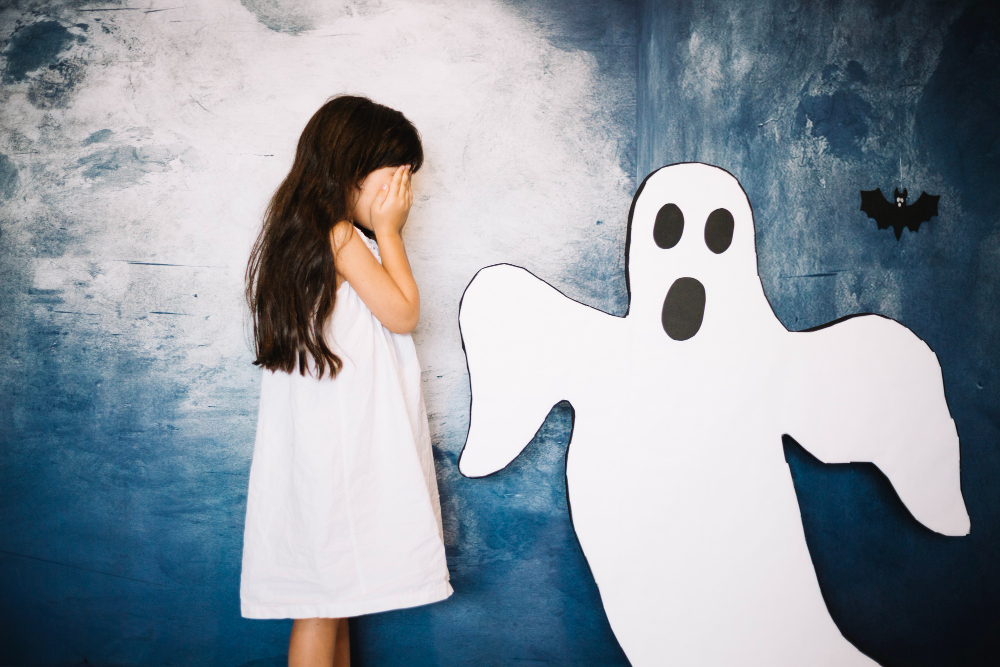Kids

A Parent’s Guide to Making Money on Instagram
Hey there, parents! Are you a fan of Instagram? Do you enjoy sharing your family’s adventures, parenting tips, and everyday moments with your followers? Well, did you know that it is easy making money on Instagram? That’s right! In this blog, we’ll walk you through some simple ways to turn your love for Instagram into a source of income.
Find Your Niche for Making Money on Instagram
The first step in making money on Instagram is to find your niche. What’s a niche, you ask? It’s like your special area of interest. It could be anything from parenting, cooking, fitness, or even DIY crafts. When you focus on a specific topic, it’s easier to connect with like-minded people and build a loyal following.
Create High-Quality Content
Now that you have your niche, it’s time to start posting content. But remember, quality is key! Take clear, well-lit photos and write engaging captions. Share your personal stories and experiences related to your niche. People love authentic content, so be yourself!
Grow Your Followers
For making money on Instagram, you’ll need followers. Start by following accounts in your niche, engaging with their content, and using relevant hashtags. Don’t forget to interact with your own followers too! Respond to comments and messages to build a strong and engaged community.
Collaborate with Brands for Making Money on Instagram
Once you have a decent following, brands may start noticing you. They might offer you collaborations to promote their products or services. Make sure the products align with your niche and that you genuinely like them. Your authenticity will shine through in your posts, which is what brands are looking for.
Affiliate Marketing
Affiliate marketing is another way to make money on Instagram. You can promote products you love and earn a commission for every sale made through your unique affiliate link. Just be transparent with your followers and let them know when you’re using affiliate links.
Sponsored Posts
As your Instagram following grows, you can approach brands for sponsored posts. This means they’ll pay you to create content featuring their products or services. Make sure the brand fits your niche and that you disclose when a post is sponsored.
Sell Your Own Products
If you have a talent for creating products or services related to your niche, why not sell them on Instagram? You can set up a shop and promote your items to your followers. It’s a great way to turn your passion into profit.
Stay Consistent For Making Money on Instagram
Consistency is key on Instagram. Try to post regularly and engage with your audience consistently. This will help you maintain and grow your following over time.
Be Patient
Making money on Instagram takes time, so don’t get discouraged if things don’t happen overnight. Keep working on your content, engaging with your followers, and exploring new opportunities.
Stay Safe
Lastly, remember to stay safe on Instagram. Protect your personal information and be cautious when sharing details about your family. Unfortunately, not everyone on the internet has good intentions.
In conclusion, making money on Instagram can be a fun and rewarding endeavor for parents. Find your niche, create quality content, grow your following, and explore various monetization options. With time and dedication, you can turn your Instagram hobby into a source of income while sharing your parenting journey with the world.

A Guide to Teaching Black Kids About Racism
Racism is an extremely rooted subject in our community, and we must address it sincerely and frankly with our kids. For Black parents, teaching their children about racism is not just a preference but a need. The talks around racism can be challenging, but they are necessary for providing youthful minds with the ability and strength required to guide a world that is frequently unjust. In this blog post, we will explore effective ways of teaching black kids about racism.
Start Early
The foremost phase of teaching Black kids about racism is to begin early. Kids begin to witness differences in skin color at a very young age, and it’s crucial to provide them with context and knowledge from the beginning. Use age-appropriate books, toys, and media to introduce diversity and multiculturalism into their lives. Honor differences and teach them that everyone deserves respect and kindness, regardless of their skin color.
Use Relatable Examples
When discussing racism with your child, use relatable examples that they can understand. For example, you can use day-to-day situations like sharing toys to explain the concept of fairness and equality. Ask them how they would feel if somebody treated them unfairly because of their skin color, and foster empathy and understanding.
Emphasize Strength and Resilience
When teaching black kids about racism, share some examples of the strength and resilience of Black individuals and communities throughout history. Share stories of Black leaders, activists, and artists who have made significant contributions to society. Emphasize that even in the face of adversity, Black people have achieved remarkable things, and your child can too.
Encourage Questions
Encourage your child to ask questions about racism and be prepared to answer them honestly. It’s essential to create a safe space where your child feels comfortable discussing their thoughts and feelings about racial issues. Be patient and provide age-appropriate explanations, ensuring that your child understands that racism is about discrimination and prejudice, not innate characteristics.
Address Stereotypes
Discuss racial stereotypes and how harmful they can be. When teaching black kids about racism, allow them to recognize and challenge stereotypes when they encounter them. Help them understand that stereotypes are unfair generalizations that do not represent the diversity and complexity of individuals from any racial or ethnic group.
Explore Cultural Heritage
Praise your child’s cultural heritage and help them embrace their identity. Teach them about their family’s history, traditions, and customs. Understanding their cultural background can empower your child and help them develop a strong sense of self.4
Promote Inclusivity
Encourage your child to be inclusive and to stand up against racism when they witness it. When teaching black kids about racism also tells them the importance of being allies to others who face discrimination. Emphasize that making the world a more just and equitable place is a collective effort.
Model Anti-Racist Behavior
Children learn by example, so it’s crucial to model anti-racist behavior in your own life. Show your child that you are committed to fighting racism through your actions, words, and choices. This consistency will reinforce the values you are instilling in them.
Teaching Black children about racism is an ongoing process that requires patience, empathy, and open communication. By beginning early, providing relatable examples, and fostering a sense of cultural pride, you can equip your child with the knowledge and resilience required to confront racism and discrimination in the world. Remember that you are not alone in this journey, and there are resources and communities available to support you and your child along the way. Together, we can work towards a more inclusive and equitable society for all.

Can Kids See Ghosts? A Closer Look at Paranormal Encounters
The subject of children and their ability to see ghosts or have paranormal encounters has long fascinated and unsettled both parents and researchers alike. Many have recounted chilling stories of children describing encounters with the supernatural, leaving us to ponder whether these young minds possess a heightened sensitivity to the otherworldly. In this blog, we will delve into the intriguing question: Can kids see ghosts? We will explore the psychological, cultural, and scientific aspects of this phenomenon to shed light on what may be happening when children claim to have ghostly encounters.
The Young Imagination
Children are known for their vivid imaginations and active fantasy worlds. At a young age, their brains are still developing, and their understanding of the world is often shaped by what they see in books, on television, and in their surroundings. This imaginative capacity can sometimes blur the line between reality and fiction, making it challenging to discern whether a child’s claims of ghostly encounters are genuine experiences or products of their creative minds.
The Power of Suggestion
Children are highly susceptible to suggestion, especially when it comes to stories of ghosts and the supernatural. They may pick up on conversations, books, or movies that depict ghosts and then incorporate these ideas into their own perceptions and beliefs. Parents, caregivers, and peers can unintentionally contribute to these beliefs (Can kids see ghosts) by sharing their own experiences or beliefs in the paranormal. This can create a feedback loop, reinforcing a child’s belief in the existence of ghosts.
Developmental Factors
Another factor to consider is the development of a child’s cognitive and perceptual abilities. Young children may have difficulty distinguishing between dreams, nightmares, and waking reality. Night terrors, sleep paralysis, and lucid dreaming can all contribute to the sense of encountering ghosts or supernatural entities during the night.
Moreover, children often have a limited understanding of the natural world and its phenomena, which can lead them to misinterpret ordinary occurrences as supernatural events. For example, shadows, creaky floors, and unusual sounds can easily be misconstrued as ghostly encounters when viewed through the lens of a child’s imagination.
Cultural and Social Influences
Cultural and social factors also play a significant role in shaping children’s beliefs and experiences related to the supernatural. In cultures where ghost stories are prevalent and discussed openly, children may be more likely to report ghostly encounters. Similarly, peer pressure and the desire to fit in can lead children to fabricate stories about seeing ghosts, even if they haven’t actually experienced anything paranormal.
Scientific Perspective (Can kids see ghosts)
\From a scientific standpoint, there is no concrete evidence to support the existence of ghosts or the idea that children have a unique ability to see them. The vast majority of ghostly encounters can be attributed to psychological and environmental factors. Optical illusions, electromagnetic fields, infrasound, and carbon monoxide exposure are just a few of the scientific explanations that can account for ghostly experiences.
While the question of whether can kids see ghosts is a fascinating one, it is essential to approach this topic with a healthy dose of skepticism and an understanding of the various psychological, cultural, and scientific factors at play. Children’s claims of ghostly encounters are often rooted in their vivid imaginations, suggestibility, developmental stage, and exposure to cultural and social influences. While it is natural for children to have active imaginations and occasionally perceive unusual occurrences, these experiences should be met with empathy and understanding, rather than a wholesale belief in the supernatural.
Ultimately, the realm of the paranormal remains a mystery, and while some may continue to believe in the existence of ghosts, it is crucial to approach these claims with a critical and rational perspective, especially when it comes to the experiences of young children.

Is TikTok Safe for Kids? Expert Views
In the ever-evolving landscape of social media, one platform that has taken the world by storm, particularly the kids and younger generation, is TikTok. With its short-form videos, catchy soundtracks, and creative challenges, TikTok has captured the attention of millions. But as parents and guardians, it’s natural to wonder whether TikTok is a safe space for our kids to explore. To shed light on this important topic, let’s delve into the expert views on why TikTok is bad for kids.
The Appeal of TikTok for Kids
TikTok’s appeal lies in its simplicity and interactivity. Users can create and share short videos on a wide range of topics, from dancing and lip-syncing to educational content and storytelling. This creative outlet has led to the rise of young content creators who express themselves through the platform’s features. So, is TikTok appropriate for kids?
Privacy Concerns and Data Security
One of the primary concerns parents have regarding TikTok revolves around data security and privacy. TikTok collects user data, including location information, device information, and browsing history. This data is used to personalize the user experience and target ads. However, this practice has raised concerns about how well the platform safeguards this data, especially when children are involved.
Experts advise parents to guide their kids in setting up private accounts, limiting who can view their content and interact with them. Additionally, ensuring that kids understand the implications of sharing personal information online is crucial. As of September 2021, TikTok has taken steps to improve its privacy policies and controls, but it’s essential to stay informed about any updates.
Content and Online Safety
TikTok is home to a vast array of content, and not all of it is suitable for young audiences. While the platform has implemented measures to filter out explicit and harmful content, there have been instances of inappropriate content slipping through the cracks.
Experts recommend that parents actively engage with their kids’ TikTok usage, discussing the kind of content they come across and setting boundaries. Open communication about what’s appropriate and what’s not will empower kids to make responsible choices online.
Cyberbullying and Mental Health
As with any online platform, there’s a risk of cyberbullying on TikTok. Kids might face negative comments, hate speech, or even malicious challenges. Such experiences can significantly impact a child’s mental health and self-esteem.
Experts emphasize the importance of monitoring kids’ interactions on TikTok. Encourage open conversations about their online experiences, and make sure they know how to report and block users who engage in harmful behavior.
Screen Time and Balance – Why is TikTok Bad for Kids
The addictive nature of TikTok, like any social media platform, can lead to excessive screen time. Experts suggest setting screen time limits and encouraging kids to balance their online activities with offline pursuits. Engaging in physical activities, and hobbies, and spending quality time with family and friends are essential for a well-rounded childhood.
The Verdict
So, should kids have TikTok? The consensus among experts is that while TikTok offers a creative outlet and a space for self-expression, there are risks that parents and guardians need to be aware of. The key lies in open communication, setting boundaries, and educating kids about responsible online behavior.
As the digital landscape evolves, parents must stay informed about the latest trends, security measures, and potential risks. By fostering a safe and supportive online environment, we can help our kids navigate the world of TikTok and social media with confidence.

Unlocking Bravery: Best Ways to Help Kids Conquer Their Fears
In the serene tranquility of children finally surrendering to sleep, just as you start to breathe a sigh of relief, a small voice breaks the silence, chirping, “Mom! Dad! I’m scared!”
This scenario is all too familiar. Throughout the years, you have diligently inspected for monsters lurking beneath the bed, velociraptors secretly residing in the closet, aliens peering through the window, and the looming presence of a gigantic, eerie clown that supposedly visits your child’s room at night.
Yet, your investigative prowess has only ever uncovered a couple of dust bunnies and a mysteriously vanished sock. Nonetheless, your little one remains skeptical.
Why? Because, deep down, they wonder…what if?
Childhood fears are not confined to the darkness alone. Many children harbor apprehensions about various things, ranging from swimming pools (what if a shark is lurking in the depths?!?) to thunderstorms (what if the lightning strikes me?!?) to spiders (can you blame them?).
While some fears may be more rational than others, all hold undeniable significance in the world of your child, regardless of their tender age.
If your household is plagued by the presence of a formidable imaginary adversary, fret not. Your children need not grow up burdened by irrational fears of the unknown or anything else!
Below, you will discover strategies to empower your child with the confidence and fortitude to confront the menacing specters of their imagination, as well as the weighty, tangible fears that life may present.
Feelings of Your Child Should Be Validated, Not Ignored
Perhaps you find yourself caught up in the whirlwind of busyness, frustration, or exhaustion, making the mere thought of discussing zombies, vampires, or any other creatures from the realms of macabre fiction seem utterly tiresome. (“They’re just imaginary, my dear!”)
However, for younger children, the task of deciphering reality from fantasy is still a work in progress. Naturally, this distinction can be rather hazy for them.
It falls upon us to reassure our little ones that certain threats are highly improbable, if not downright impossible. Yet, we can approach this reassurance with a touch of empathy as well. After all, it’s not easy to be young and inundated with countless images and verbal warnings of potential dangers each day.
Children aren’t foolish for resorting to fight-or-flight instincts as they process everything, prioritizing fear over deep reasoning. (Even though you know your child won’t suffer food poisoning from a bite of broccoli, they aren’t so convinced…)
Of course, fear does serve a purpose. Its role in survival is crystal clear. Instead of brushing off our children’s anxieties, it’s beneficial to respond with empathy and encouragement.
Adopting a sympathetic tone doesn’t mean fueling their anxiety or fear. Rather, it means letting our kids know that we comprehend the feeling of being scared—and there’s no shame in it.
Realize When Fears Are Exaggerated And When They Are Real
At times, children tend to exaggerate their fears as a way to capture our attention. Bedtime tactics like requesting us to check their closet for monsters once again or pleading to sleep beside us for a night might serve as classic examples.
This behavior is particularly common when kids feel unnoticed or when they haven’t had their regular dose of mind, body, time, and soul bonding.
As a parent, you know your child better than anyone else. You can usually discern whether their fear is fabricated or genuine. However, if you’re uncertain, there are certain signs you can watch out for.
If your family has lately undergone a traumatic affair, or if your kids invariably picture overwhelming emotions of sadness, anxiety, or dread that they cannot regulate, it may be intelligent to seek help. The fear they express could be situation-specific and always need attention, or it could be indicative of an underlying anxiety disorder or phobia.
Fortunately, there are lots of consultants and psychologists who specialize in treating fear in kids. So, if you have any suspicions, don’t hesitate to reach out for assistance.
Ensure Your Children Are Confident in Solving Problems
Once we have shown empathy, it is crucial to convey our unwavering belief in our children’s ability to conquer their fears.
Neuroscientists and psychologists concur that while some fears are innate, a significant portion of them is learned. This fantastic revelation empowers us with greater control over our fears. And it’s universally acknowledged that having more control is a highly advantageous position to be in.
When children are granted a bit more autonomy in their lives, such as making age-appropriate decisions or having the opportunity to express their opinions, they experience heightened levels of belonging and significance. This, in turn, naturally amplifies their sense of validation and self-assurance.
Increase Quality-Time Comforts
Children who feel safe and secure, both physically and mentally, are more likely to confront their fears with greater ease.
When kids harbor bedtime anxieties and become preoccupied with their fears during the night, incorporating Evening MBST (MIND, BODY, AND SOUL TIME®) can imbue them with a sense of being lovingly “armed” with protection. This can lead to a smoother transition into sleep and a more peaceful slumber.
Whether their bedtime apprehension stems from separation anxiety, night terrors, or the common fear of the dark, incorporating MBST into their bedtime routine serves as a distraction from worrisome “what if” thoughts. Not only does it offer immense comfort, but it also enhances overall well-being and instills a sense of confidence.
To have a fulfilling MBST (MIND, BODY, AND SOUL TIME®) session, all it takes is a dedicated 10-15 minutes of your undivided attention. During this time, allow your child to select the activity of their choice, and then simply give it a name—both before and after the session.
Conclusion
While fear is a natural part of life, it should never immobilize our children daily. Fortunately, there are strategies you can employ to assist your kids in conquering their deepest worries and building unwavering confidence in their own inner strength.
From the youngest toddlers to the resilient teenagers, our children possess the spirit of warriors. Let’s guide them toward recognizing and embracing that inherent courage within themselves.
